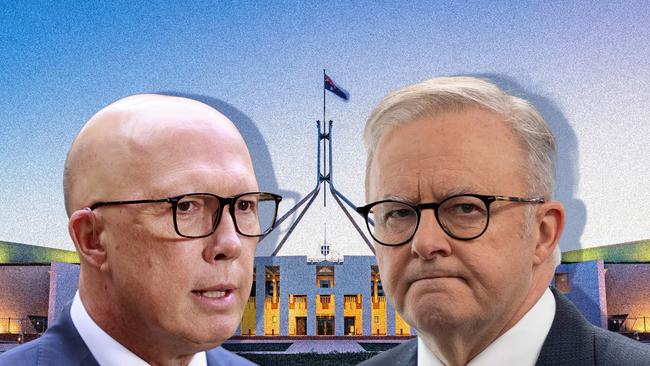Turns out the best leaders are not decisive, they are ambivalent
The conventional wisdom is that you want a boss who is decisive and resolute about the path forward. But that has it backward.

If you’re asked to picture a successful leader, what do you see? If you’re like most people, you imagine somebody who is decisive and in control, who seems to have little doubts about their actions.
That is why decisive people often are promoted into leadership positions in the first place.
But that kind of thinking has it backward. In more than two decades of research into how leaders’ decision-making affects organisational success, I’ve uncovered a surprising insight: the most effective leaders aren’t the ones who seem to have all the answers. The most effective leaders are those who question themselves.
They are, in other words, ambivalent. They feel and exhibit conflicting emotions – and are tolerant of them – and can hold two contradictory thoughts or feelings in their head.
Such ambivalence helps in several ways. Internal conflict helps us adapt to complex situations by forcing us to seek out more information and consider alternatives.
Managers who don’t see everything as positive or negative seek out expertise from others, incorporating that knowledge more than less ambivalent leaders. It makes them more receptive to competing or contradictory evidence than more decisive leaders.
As a result, ambivalent leaders make better decisions than the leaders who are most certain of themselves.
In study after study my colleagues and I have found ambivalent feelings allow leaders to look at the world from conflicting lenses simultaneously; to identify a new job candidate’s strengths and weaknesses, to think about a project’s positive and negative components, to provide both positive and negative feedback to a junior colleague. They engage with competing ideas, contradictory evidence, opposing sources, conflicting knowledge and balanced feedback, and they do this even if the uncertainty causes discomfort.
Because of that, ambivalent leaders’ teams proved better at solving complex problems and achieving win-win results in negotiations than decisive leaders’ teams. And their team members became more intellectually curious and innovative.
Ambivalent leaders face an uphill challenge in becoming leaders in the first place. One of the best ways to convince people into thinking you have what it takes to be a leader is to give definitive answers, even about subjects you know nothing about. It makes people look dominant, important and knowledgeable. Ambivalent leaders, meanwhile, aren’t decisive in the eyes of others and often are perceived as weak and deferential.
But our research found the truth is exactly the opposite. In one study of 164 consulting teams in Brazil, we found leaders who were ambivalent about the scope and direction of new projects consulted with more team members, and more frequently, than leaders who were less ambivalent. The openness of these leaders also inspired team members to seek more information from others.
At the end of the project, clients rated these teams higher in their performance than teams led by decisive managers. The impact of having a leader who experienced internal conflict was moderate and positive. The effect was especially strong when the problems were complex.
In a second study in the US, we conducted a murder-mystery experiment where the information needed to solve the mystery was distributed across team members.
At the start, the leaders of these teams didn’t have all the information, although they didn’t always know this.
Of the 182 teams involved, leaders were told to make an initial assessment about the crime and then make arguments that supported the initial theory, opposed it or were ambivalent (both positive and negative arguments). Another group was told not to evaluate the theory at all.
Leaders who were randomly assigned to be ambivalent turned in much better results at the end of the experiment, correctly solving the mystery 67 per cent of the time. This was significantly higher than teams led by people who had supported their initial theory (34 per cent), opposed it (33 per cent) or had not evaluated it one way or the other (28 per cent).
As in the Brazilian study, the leaders with internal conflict sought more information from others, asking subordinates for input more than the other leaders. Here, too, the behaviour cascaded down the team, prompting everyone to gather crucial information needed to solve the mystery.
My most recent research, of students at a university, yielded similar results. We monitored the students as they performed semester-long class projects in teams.
At the end of the semester, team members responded to a survey about their leaders, and leaders responded to questions about their team members. In the survey, team members were receptive to ambivalence in their leaders; the more ambivalent leaders seemed to be about decisions, the more team members felt the leaders were really good listeners. Ambivalent leaders, meanwhile, reported that their team members had higher levels of intellectual curiosity, constructive dissent and innovative behaviour than leaders who were less ambivalent.
Ambivalence doesn’t just make people more effective; it makes them more open to criticism and dealing with people different from themselves. In another study, we had 2205 participants take an implicit-bias test about their feelings towards another racial group. Then we switched gears and asked them to write vividly about a memory that evoked feelings of happiness, sadness, neutrality or ambivalence. (We told them what feeling to write about, which we selected at random.)
After participants completed that task, we gave them feedback about their results on the implicit-bias test. The people who wrote about an ambivalent memory were less defensive than the others about the feedback, and considered it more valid, credible and reliable. Their prejudiced feelings towards the other racial group were also lower than the others. Why? Ambivalence makes people’s attention and thinking style more expansive.
For leaders, then, there is an advantage to cultivating internal conflict – within themselves and their team members. So, what is the best way to do that?
Acknowledge internal conflict. Leaders should pay attention to conflicting feelings as they try to make a decision. They shouldn’t try to bury those contradictory impulses or ignore them. Instead, they should look at the feelings as an opportunity to get better informed and make a better choice.
Leaders should cultivate internal conflict by writing down ambivalent memories or thinking about trade-offs. They also should engage with the arts – whether music, literature or theatre – which can stir a range of emotions at once.
Leaders should make it clear in their organisations that questioning yourself is a crucial part of decision-making. And they should put systems in place to ensure people are likelier to embrace inner conflicts. Awareness can make us all more conscious but systems make it sustainable.
Ambivalent leaders defy traditional views of what leaders look like. But the social-scientific evidence shows, again and again, that their performance also surpasses the decisive and resolute leader. Ambivalence is a spark for critical thinking and collaborative decision-making.
THE WALL STREET JOURNAL
Naomi Rothman is a professor of management at Lehigh University in Bethlehem, Pennsylvania.



To join the conversation, please log in. Don't have an account? Register
Join the conversation, you are commenting as Logout